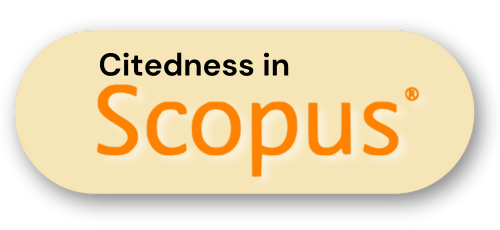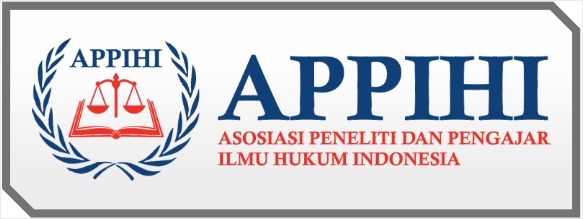Beyond Formality: Transforming FPIC into a Tool for Indigenous Empowerment
DOI:
https://doi.org/10.61194/law.v2i4.724Keywords:
Indigenous Rights, Environmental Justice, FPIC, Legal Pluralism, Extractive Industries, Participatory Governance, Sustainable Policy ReformAbstract
This narrative review examines the integration of Indigenous rights within environmental legal frameworks, focusing on how Free, Prior and Informed Consent (FPIC) is conceptualized and implemented globally. The study aims to assess whether existing legal systems—both international and national—adequately ensure Indigenous communities' participation in environmental decision-making, particularly concerning extractive and infrastructure projects. Utilizing a narrative literature review method, we synthesized findings from international treaties, national legislations, and case studies from both developed and developing countries. The analysis was structured around the international legal foundations (e.g., UNDRIP, ILO 169), national legal adaptations, case studies involving extractive projects, and community-led strategies for environmental protection. The results show that although international frameworks provide strong normative guidance, national implementation is often inconsistent, constrained by political and economic interests. FPIC, while widely recognized, is frequently reduced to a procedural formality rather than serving as a tool for empowerment. Structural barriers, such as institutional weakness, legal ambiguity, and the dominance of economic paradigms, further erode Indigenous environmental rights. In contrast, countries that integrate legal pluralism and community-driven consultation show more promising outcomes. The study concludes that effective legal reform should prioritize participatory frameworks, enforceable FPIC mechanisms, and the institutionalization of customary knowledge. These findings have implications for policy reform and future research on environmental justice and Indigenous sovereignty.
References
Allard, C., & Curran, D. (2021). Indigenous influence and engagement in mining permitting in British Columbia, Canada: Lessons for Sweden and Norway?. Environmental Management, 72(1), 1-18. https://doi.org/10.1007/s00267-021-01536-0 DOI: https://doi.org/10.1007/s00267-021-01536-0
Andoke, L., Arazi, E., Suárez, H., Griffiths, T., & Gutiérrez-Sánchez-Salamanca, E. (2023). Amazonian visions of visión amazonía: Indigenous peoples' perspectives on a forest conservation and climate programme in the Colombian Amazon. Oryx, 57(3), 335-349. https://doi.org/10.1017/s0030605322001636 DOI: https://doi.org/10.1017/S0030605322001636
Barsh, R. (2008). Indigenous peoples., 829-852. https://doi.org/10.1093/oxfordhb/9780199552153.013.0036 DOI: https://doi.org/10.1093/oxfordhb/9780199552153.013.0036
Bouayad, A. (2020). Wild rice protectors: An Ojibwe odyssey. Environmental Law Review, 22(1), 25-42. https://doi.org/10.1177/1461452920912909 DOI: https://doi.org/10.1177/1461452920912909
Brown, L., Atapattu, S., Stull, V., Calderón, C., Huambachano, M., Houénou, M., … & Monzón, A. (2020). From a three-legged stool to a three-dimensional world: Integrating rights, gender and indigenous knowledge into sustainability practice and law. Sustainability, 12(22), 9521. https://doi.org/10.3390/su12229521 DOI: https://doi.org/10.3390/su12229521
Country, B. (2023). Keepers of the flame: Songspirals are a university for us. Australian Journal of Environmental Education, 39(3), 279-292. https://doi.org/10.1017/aee.2023.27 DOI: https://doi.org/10.1017/aee.2023.27
Correia, J. (2023). Disrupting the patrón: Indigenous land rights and the fight for environmental justice in Paraguay’s Chaco. https://doi.org/10.1525/luminos.151 DOI: https://doi.org/10.1525/9780520393110
Etchart, L. (2022). Indigenous peoples and international law in the Ecuadorian Amazon. Laws, 11(4), 55. https://doi.org/10.3390/laws11040055 DOI: https://doi.org/10.3390/laws11040055
Fanari, E. (2019). Relocation from protected areas as a violent process in the recent history of biodiversity conservation in India. Ecology Economy and Society–the Insee Journal, 2(1). https://doi.org/10.37773/ees.v2i1.55 DOI: https://doi.org/10.37773/ees.v2i1.55
Fitzmaurice, M., & Attard, F. (2023). Vulnerability, Sami identity, and the law., 15-62. https://doi.org/10.1093/oso/9780197659083.003.0002 DOI: https://doi.org/10.1093/oso/9780197659083.003.0002
Gilbert, J. (2023). Creating synergies between international law and rights of nature. Transnational Environmental Law, 12(3), 671-692. https://doi.org/10.1017/s2047102523000195 DOI: https://doi.org/10.1017/S2047102523000195
Gómez-Betancur, L., Vilardy, S., & R., D. (2021). Ecosystem services as a promising paradigm to protect environmental rights of indigenous peoples in Latin America: The constitutional court landmark decision to protect Arroyo Bruno in Colombia. Environmental Management, 69(4), 768-780. https://doi.org/10.1007/s00267-021-01483-w DOI: https://doi.org/10.1007/s00267-021-01483-w
Hidayat, H., Yogaswara, H., Herawati, T., Blazey, P., Wyatt, S., & Howitt, R. (2018). Forests, law and customary rights in Indonesia: Implications of a decision of the Indonesian constitutional court in 2012. Asia Pacific Viewpoint, 59(3), 293-308. https://doi.org/10.1111/apv.12207 DOI: https://doi.org/10.1111/apv.12207
Ituarte‐Lima, C. (2023). Biosphere defenders leveraging the human right to healthy environment for transformative change. Environmental Policy and Law, 53(2-3), 139-151. https://doi.org/10.3233/epl-239003 DOI: https://doi.org/10.3233/EPL-239003
Jackson, S. (2018). Water and indigenous rights: Mechanisms and pathways of recognition, representation, and redistribution. Wiley Interdisciplinary Reviews Water, 5(6). https://doi.org/10.1002/wat2.1314 DOI: https://doi.org/10.1002/wat2.1314
Ludescher, M. (2024). Environmental justice for indigenous peoples in the constitutional jurisprudence of Colombia and Ecuador. Environmental Justice. https://doi.org/10.1089/env.2023.0078 DOI: https://doi.org/10.1089/env.2023.0078
Mei, L. (2023). Logging and indigenous peoples' well-being: An overview of the relevant international human rights jurisprudence. The International Forestry Review, 25(1), 17-27. https://doi.org/10.1505/146554823836902608 DOI: https://doi.org/10.1505/146554823836902608
Nelson, J., Muhammed, N., & Rashid, R. (2015). An empirical study on compatibility of Sarawak Forest Ordinance and Bidayuh native customary laws in forest management. Small-Scale Forestry, 15(2), 135-148. https://doi.org/10.1007/s11842-015-9313-y DOI: https://doi.org/10.1007/s11842-015-9313-y
Neimark, B., & Vermeylen, S. (2016). A human right to science?: Precarious labor and basic rights in science and bioprospecting. Annals of the American Association of Geographers, 107(1), 167-182. https://doi.org/10.1080/24694452.2016.1218749 DOI: https://doi.org/10.1080/24694452.2016.1218749
Nur, A., Al-Fatih, S., & Intania, C. (2024). Revitalising indigenous rights participation in mining lawmaking process: Evaluation and proposal for Indonesia. Law Reform, 20(1), 188-210. https://doi.org/10.14710/lr.v20i1.63684 DOI: https://doi.org/10.14710/lr.v20i1.63684
Peck, M., Desselas, M., Bonilla‐Bedoya, S., Redín, G., & Cordero, J. (2024). The conflict between rights of nature and mining in Ecuador: Implications of the Los Cedros cloud forest case for biodiversity conservation. People and Nature, 6(3), 1096-1115. https://doi.org/10.1002/pan3.10615 DOI: https://doi.org/10.1002/pan3.10615
Prasniewski, V., González-Daza, W., Alvarenga, G., Santos-Silva, L., Teixido, A., & Izzo, T. (2024). Economic, environmental and social threats of a mining exploration proposal on indigenous lands of Brazil. Acta Amazonica, 54(2). https://doi.org/10.1590/1809-4392202301922 DOI: https://doi.org/10.1590/1809-4392202301922
Pyhälä, A. (2024). Decolonizing nature conservation according to natural law: Learning from the Kogui. Alternative an International Journal of Indigenous Peoples, 20(3), 484-493. https://doi.org/10.1177/11771801241255697 DOI: https://doi.org/10.1177/11771801241255697
Reid, M., Collins, M., Hall, S., Mason, E., McGee, G., & Frid, A. (2022). Protecting our coast for everyone's future: Indigenous and scientific knowledge support marine spatial protections proposed by Central Coast First Nations in Pacific Canada. People and Nature, 4(5), 1052-1070. https://doi.org/10.1002/pan3.10380 DOI: https://doi.org/10.1002/pan3.10380
Renglet, C. (2022). The recognition of the special relationship of indigenous peoples with their environment under international law. International Journal on Minority and Group Rights, 29(4), 720-746. https://doi.org/10.1163/15718115-bja10068 DOI: https://doi.org/10.1163/15718115-bja10068
Sumarni, S., Wijaya, M., & Sugiana, A. (2023). Safeguarding indigenous rights and territories: Integrating Dayak Ngaju wisdom in peatland ecosystem management. Udayana Journal of Law and Culture, 7(2), 121. https://doi.org/10.24843/ujlc.2023.v07.i02.p01 DOI: https://doi.org/10.24843/UJLC.2023.v07.i02.p01
Tegegne, Y., Ramcilovic‐Suominen, S., Fobissie, K., Visseren-Hamakers, I., Lindner, M., & Kanninen, M. (2017). Synergies among social safeguards in FLEGT and REDD+ in Cameroon. Forest Policy and Economics, 75, 1-11. https://doi.org/10.1016/j.forpol.2016.11.005 DOI: https://doi.org/10.1016/j.forpol.2016.11.005
Troell, J., & Keene, S. (2022). Legal recognition of customary water tenure in Sub-Saharan Africa: Unpacking the land-water nexus. https://doi.org/10.5337/2022.215 DOI: https://doi.org/10.5337/2022.215
Ulloa, A. (2017). Perspectives of environmental justice from indigenous peoples of Latin America: A relational indigenous environmental justice. Environmental Justice, 10(6), 175-180. https://doi.org/10.1089/env.2017.0017 DOI: https://doi.org/10.1089/env.2017.0017
Velásquez, T. (2017). Tracing the political life of Kimsacocha: Conflicts over water and mining in Ecuador’s southern Andes. Latin American Perspectives, 45(5), 154-169. https://doi.org/10.1177/0094582x17726088 DOI: https://doi.org/10.1177/0094582X17726088
Weis, V. (2019). Towards a critical green southern criminology: An analysis of criminal selectivity, indigenous peoples and green harms in Argentina. International Journal for Crime Justice and Social Democracy, 8(3), 38-55. https://doi.org/10.5204/ijcjsd.v8i3.1244 DOI: https://doi.org/10.5204/ijcjsd.v8i3.1244
Winter, K., Vaughan, M., Kurashima, N., Giardina, C., Quiocho, K., Chang, K., … & Berkes, F. (2021). Empowering indigenous agency through community-driven collaborative management to achieve effective conservation: Hawai‘i as an example. Pacific Conservation Biology, 27(4), 337-344. https://doi.org/10.1071/pc20009. DOI: https://doi.org/10.1071/PC20009






